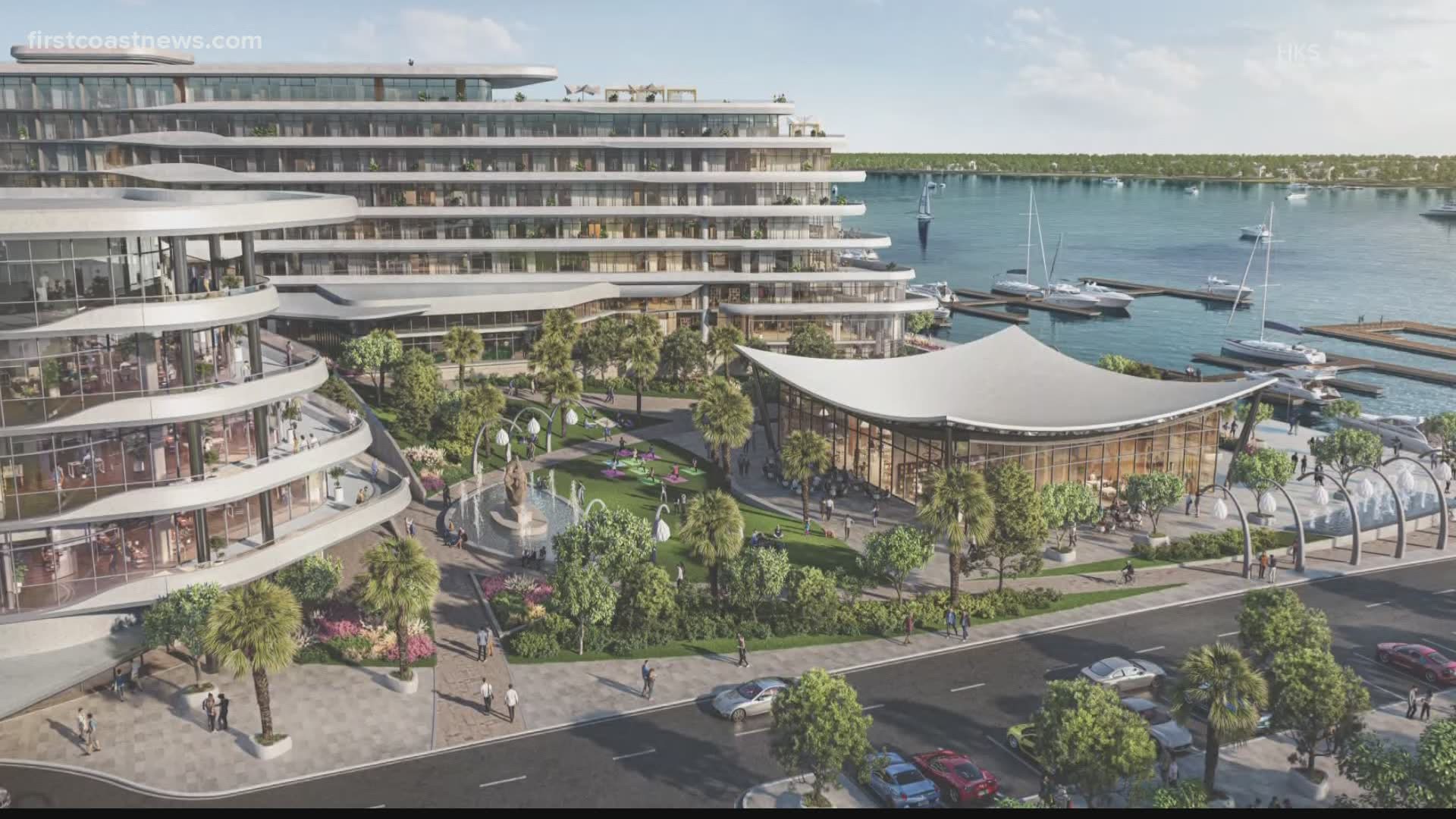JACKSONVILLE, Fla. — The state Department of Environmental Protection will be among the agencies that Jaguars owner Shad Khan's plans for a Four Seasons Hotel must go through because a grant the city won in 1985 for building a marina does not allow such development on the land eyed by Khan.
Downtown Investment Authority CEO Lori Boyer said Monday the city will make the case to the state for a land swap that shifts the state grant's restrictions to vacant property in the Shipyards site that's closer to the core of downtown.
"I think that we are going to present them with a really exciting, interesting park design," she said.
The restriction imposed by the state grant has echoes of a federal grant that came with strings attached to it for building Metropolitan Park decades ago. That federal grant ultimately kept the original 14.3 acres of Met Park off limits to development despite attempts by the city to get National Park Service agreement to a land swap.
The two grants are not identical, however. The grant for Met Park came through the Land and Water Conservation Fund overseen by the National Park Service.
The grant at issue in Khan's plans for a Four Seasons is from the Florida Recreation Development Assistance Program under the state Department of Environmental Protection.
“I would not want to judge the degree of difficulty, but it is a different approving entity," Boyer said.
Khan and leaders of the Jaguars unveiled an updated plan last Thursday for building a five-star hotel, office building and upgraded marina on the riverfront.
If the state were to refuse to do a land swap, another option would be to repay the state for the grant. That would come at a much higher cost than the original grant amount because the state would charge interest. Boyer said the figure the state recently gave for the repayment amount is $21 million.
She said if it came to that point, the draft terms of a deal being worked on between DIA and Khan's firm would give Khan the option of paying whatever is owed to the state to dissolve the grant restrictions. If Khan did not want to make that payment, he could terminate the contract with the city.
But the city's focus will be on convincing the state to agree to a land swap by designating a portion of the Shipyards as a park.
Boyer said the city will use the Jessie Ball duPont Fund's ongoing study about activating the riverfront on both sides of downtown to come up with alternatives. She said the duPont study will "let the public tell us what they want" in the park.
The state grant applies to a total of 10 acres. Eight acres is the tract where Kids Kampus used to be before it was dismantled years ago, and another 2 acres is where the city had parking under the elevated Hart Bridge ramp that has been demolished.
The biggest chunk of the Shipyards that could be used for a land swap covers roughly 12 acres between Hogans Creek and the half-built Berkman 2 tower. Boyer said that site is closer to the core of downtown than the Kids Kampus site and will help fill in a missing link between downtown and the sports complex.
“Our hope is that we have the opportunity to provide a better park that connects downtown to the sports and entertainment district, and what we’re looking at is providing more park space," she said.
That part of the Shipyards has piers jutting into the river. Boyer said a floating dinner boat could be part of the park concept.
On the uplands site, Boyer said a portion of the site near Hogans Creek might be suitable for a new restaurant. The city also could relocate to it the fire museum building that is on the former Kids Kampus site.
The Shipyards' past as an industrial site means it suffers from environmental contamination. The city has about $13 million set aside for remediation.
“We’re not talking about swapping a contaminated piece of land," Boyer said. "It would be fully remediated."
Boyer said in the case of using the site as a park, the general standard is to have a 2-foot depth of clean soil. She said using it as a park requires less environmental clean-up than would be the case for construction of buildings that stir up the underground soil when footers are installed for the structures.
While the part of the Shipyards west of Hogans Creek would be a large park, the riverfront east of the creek would have some smaller tracts that could work as park space as well.
The property east of Hogans Creek could have a relocated Museum of Science and History Building, the second phase of Khan's development featuring a medical complex, and then the Four Seasons Hotel followed by the original Met Park with its great lawn.
The entire stretch would have an extension of the Northbank riverwalk

